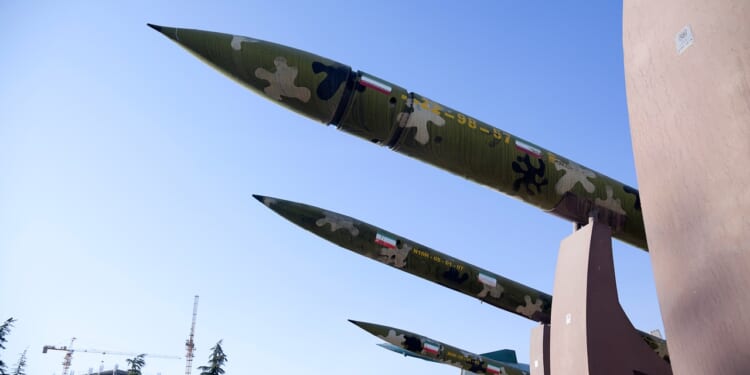Despite UN sanctions, Iran’s ballistic missile activity appears to be expanding.
While a temporary ceasefire between Israel and the Islamic Republic of Iran continues to hold, Tehran is not masking its missile production expansion agenda. Earlier this month, Iranian foreign minister Abbas Araghchi declared that the nation’s weapons arsenal “Far surpasses that of the 12-Day War.” Araghchi added that Israel’s ambitions in the recent flare-up of violence between the two countries were never met, and that the Jewish state was “defeated.” Another Iranian official mirrored this rhetoric in November. Defense Minister Brig. Gen. Aziz Nasirzadeh claimed that Iran’s defense industry has advanced over the last few months, touting that the quality and quantity of the country’s missile arsenal have only improved.
In October, European intelligence sources reported that Iran was indeed building up its ballistic missile program in the aftermath of the 12-day war. Despite the United Nations sanctions that prohibit arms sales to the regime, Tehran’s ballistic missile activity appears to be expanding. Specifically, reports indicate that multiple shipments of sodium perchlorate were delivered to the Iranian port of Bandar Abbas from China. This chemical is essential for producing the solid propellant that fuels Iran’s conventional missile supply, making this shipment of top concern. While Tehran’s violations of UN-instilled obligations are nothing new, the regime’s focus on replenishing its missile stockpiles is a direct threat to Israel in the aftermath of the war.
To make matters worse, Iranian officials also gained important insight pertaining to their weapons load during the 12-day war. Behnam Ben Taleblu, a senior fellow at the Foundation for Defense of Democracies, outlined how Iran is incorporating lessons learned from the conflict. “The Islamic Republic also learned how to fire less and get more bang for your buck based on the targets and based on the location and based on the firing sequence, or the launch formula, that the regime employed when it fired for some bases that were further east in Iran during the 12-Day War,” he explained. “There is no doubt the regime wants to improve the lethality of its missile force. It certainly has learned a lot between Operation True Promise One, True Promise Two and True Promise Three.” During the war, Iran fired some of its most lethal and advanced missiles toward Israel. The Shabah-3 medium-range ballistic missile, the Fateh-110 short-range solid-propellant ballistic missile, and the longer-range Zolfaghar ballistic missile represent just some of the ordnance launched by Tehran during the conflict.
Iran has never been shy when it comes to boasting about its missile might. In 2025 alone, the Islamic Revolutionary Guard Corps showcased Iran’s missile capacity on multiple occasions via propaganda videos depicting underground missile facilities throughout the country. In addition to the footage provided by state-run media in the country, Iran steadily supplies its regional proxy affiliates, including Hamas in Gaza, Hezbollah in Lebanon, and the Houthis in Yemen, with weapons, funding, and training. Clearly, Tehran’s prioritization of missile expansion is only increasing, paving the way for a future conflict with Israel down the line.
About the Author: Maya Carlin
Maya Carlin, National Security Writer with The National Interest, is an analyst with the Center for Security Policy and a former Anna Sobol Levy Fellow at IDC Herzliya in Israel. She has by-lines in many publications, including The National Interest, Jerusalem Post, and Times of Israel. You can follow her on Twitter: @MayaCarlin. Carlin has over 1,000 articles published over the last several years on various defense issues.
Image: Shutterstock.

















